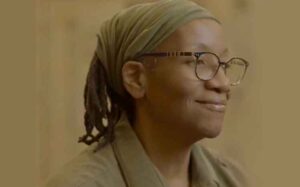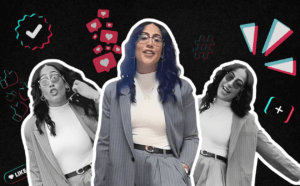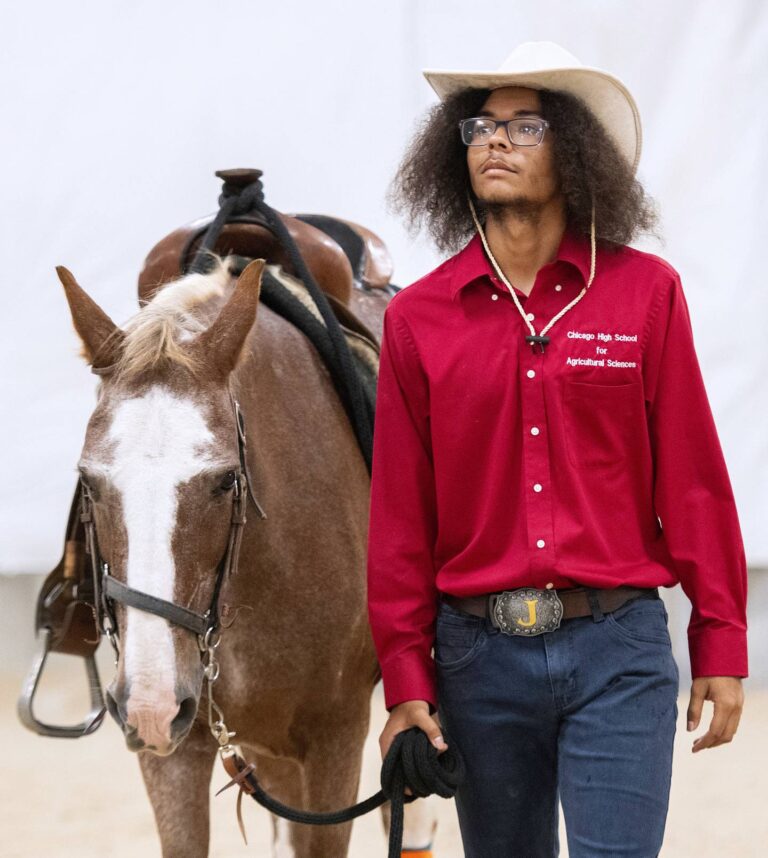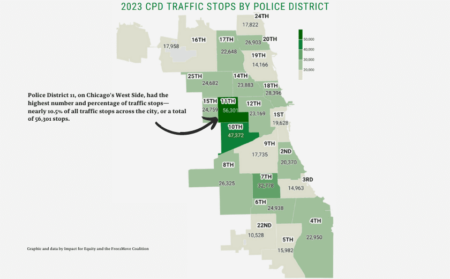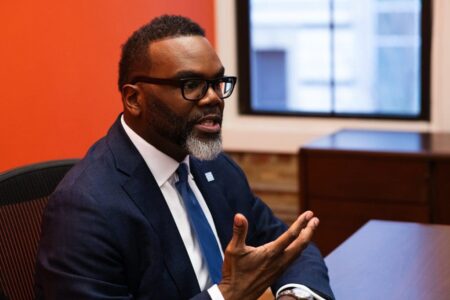For several years, students at the Chicago High School for Agricultural Sciences depended on Felice, their only horse, to foster their equestrian and therapeutic riding program. But early Friday morning, Stone, Sugar and Thor, all quarter horses, arrived at the school thanks to a donation from the National Latino Farmers and Ranchers Trade Association.
“This gift to the community is part of our goal of knocking down barriers to provide equitable access for communities of color to resources in agriculture,” said Rudy Arredondo, the executive director of the trade association.
Advertisement
The three horses stood next to smiling students, who began grooming and riding them shortly after they arrived from Colorado at the high school on Chicago’s Far South Side.
The high school can now expand its horse program beyond the classroom and allow students to gain firsthand experience with the animal science industry and equestrian science that could then inspire them to pursue a career in agriculture, said the school’s principal, William Hook.
Advertisement
Stone, Sugar and Thor will also be a part of a therapeutic riding program for diverse learners, adults with disabilities, veterans and first responders with post-traumatic stress disorder, Hook said.
“It is more than just riding a horse,” said Paulina Judith Arellano, the school’s horse trainer and the coordinator of the therapeutic program.
Grooming, taming and riding a horse “will humble people down by bringing out the leader in you,” Arellano said. “Horses are herd animals and they will follow anyone who has an instinct of being leader, so caring for the horses will help people become leaders.”
Arellano attended the high school and graduated in 2016. She returned in 2021 after graduating from the University of Findlay with a Bachelor of Science in Western Equestrian Studies and Animal Science Industry.
The high school, she said, opens a window to several careers in the agricultural industry that may be overlooked.
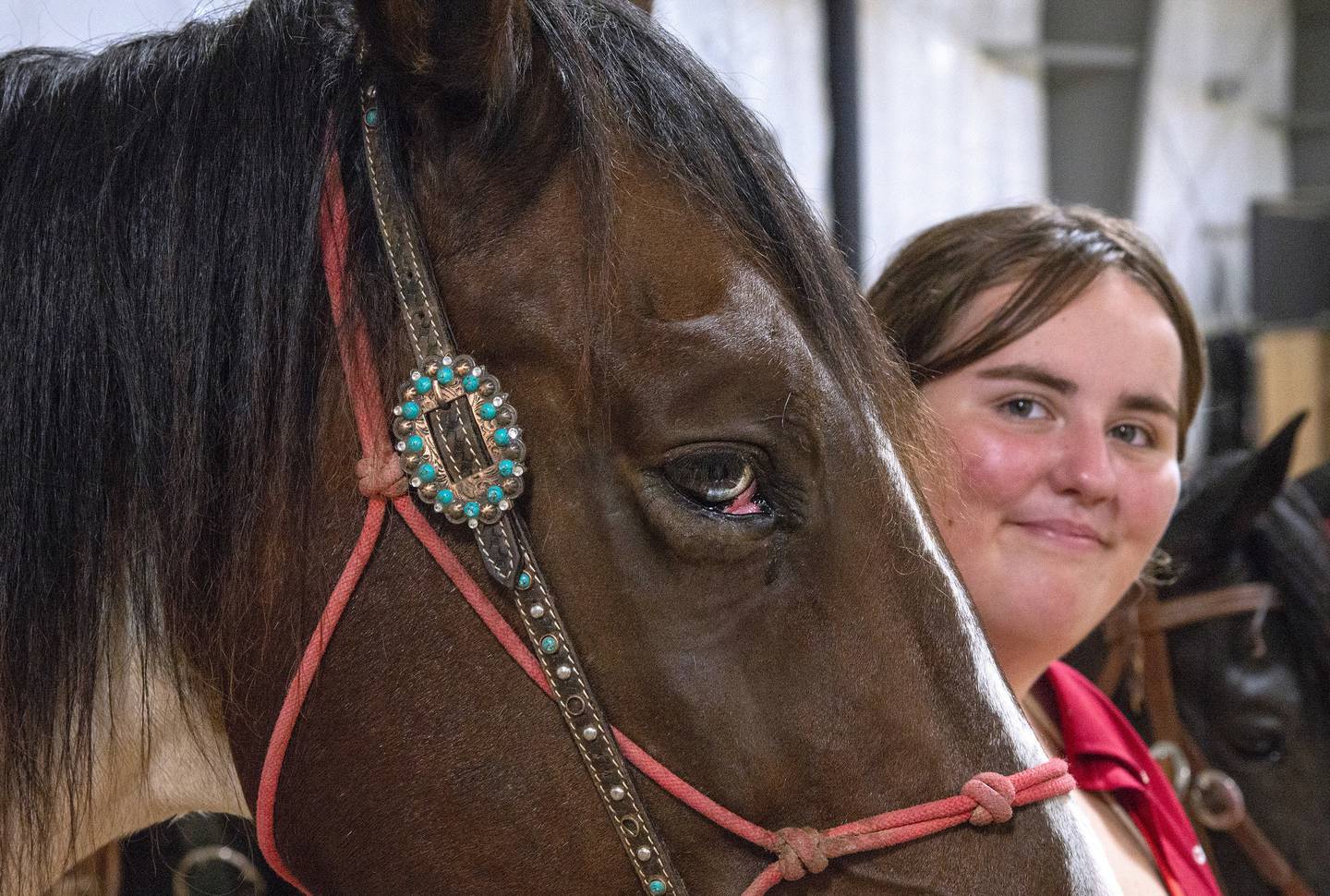
The school was founded in 1985 with the unique goal of providing students from across the city the opportunity to study different aspects of agriculture. The pathways include agricultural finance and economics; agricultural mechanics and technology; animal science; food science and technology; horticulture; and biotechnology in agriculture.
Arredondo is a rancher at heart who has worked to represent the interests of Latino farmers and ranchers in Washington, D.C., by proposing agriculture policy recommendations to the U.S. Department of Agriculture. He said he had been monitoring the high school from afar for several years before finally visiting in June.
During his visit with Eugene Pickett, the deputy director of NLFR, the two decided to gift the school with three horses after seeing Arellano and students working their only horse, Felice.
Advertisement
“The line for this horse is going to be pretty long,” Pickett thought to himself during the visit. “You’re going to need some more stock.”
They quickly arranged the donation of the horses.
Pickett commended the school for its curriculum and its work to inspire the next generation of farmers and ranchers from the Midwest.
“Don’t be just proud of it; this needs to be part of the gospel,” he said.
The partnership between the NLFR and the high school is “the continuation of our interest in promoting the value of the land and what it produced. We need to care of it,” Arredondo said.
“We’re in a climate crisis, so that means that there is a destruction of the environment and we have to remediate,” he added. “We have an infrastructure that is old and deteriorating and there has been no effort to remediate. We need to make our farms resilient.”
Advertisement
If students are provided with the resources and motivation, they can help change and enrich the agricultural field, he said.
Chicago Public Schools CEO Pedro Martinez echoed Pickett’s message and said the magnet school was a model for the city.
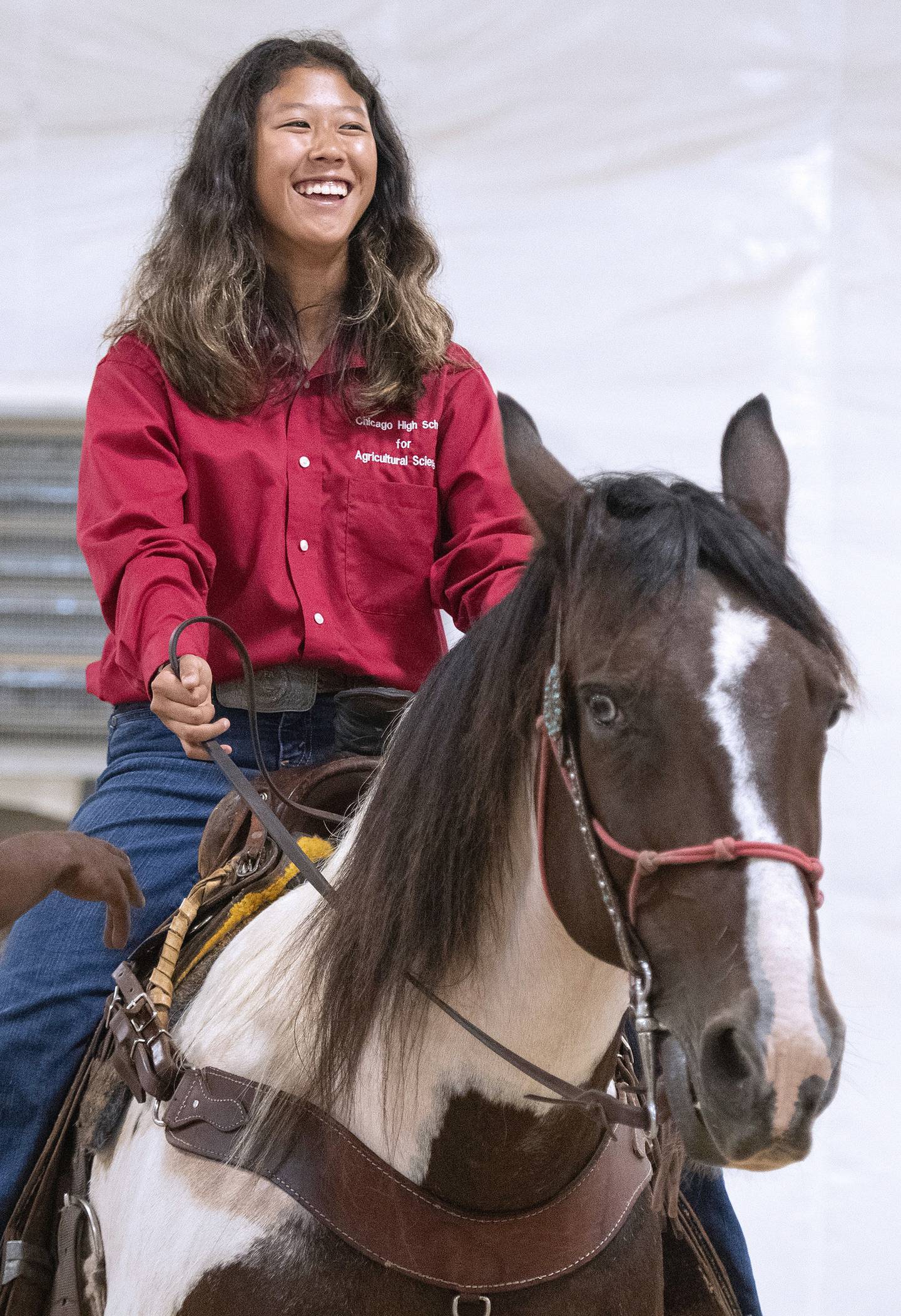
Sophia Roy is a sophomore at the school who joined the horse program in June. Her goal, she said, was to learn to take care of horses and about stable management. Since working with Felice, she’s learned to groom, train and ride horses, but she’s also formed a bond with the horse.
The three new horses, she said, will allow more students to create the same bond she has with Felice.
